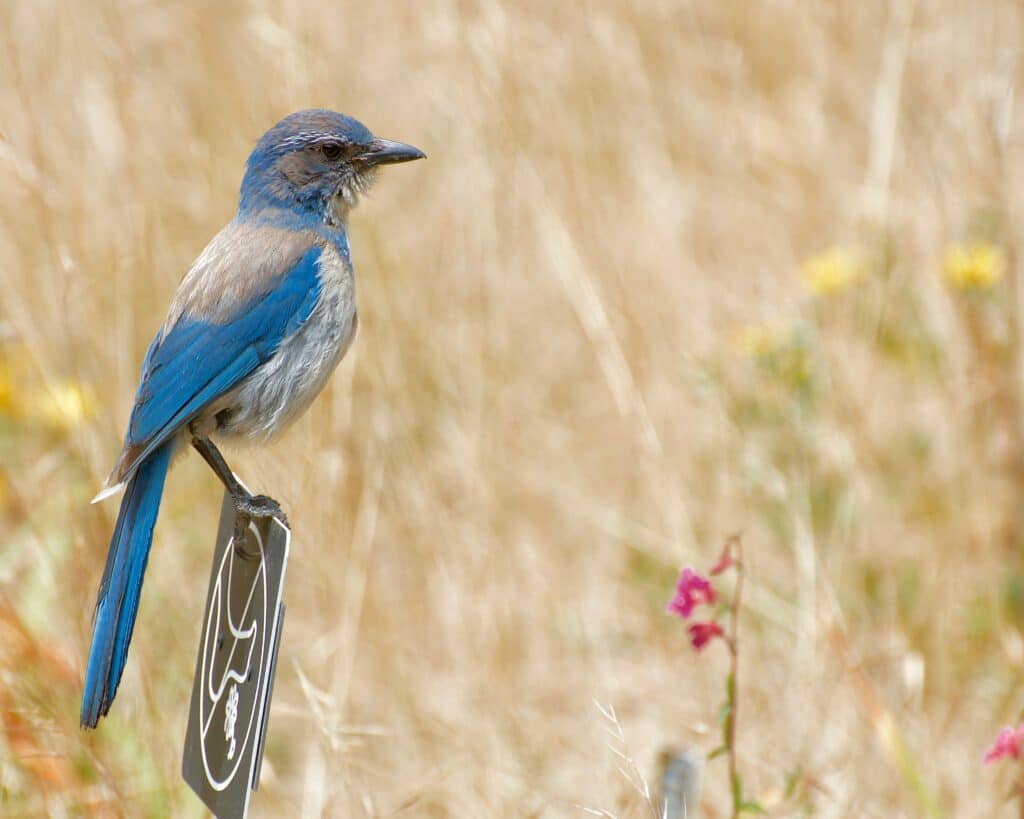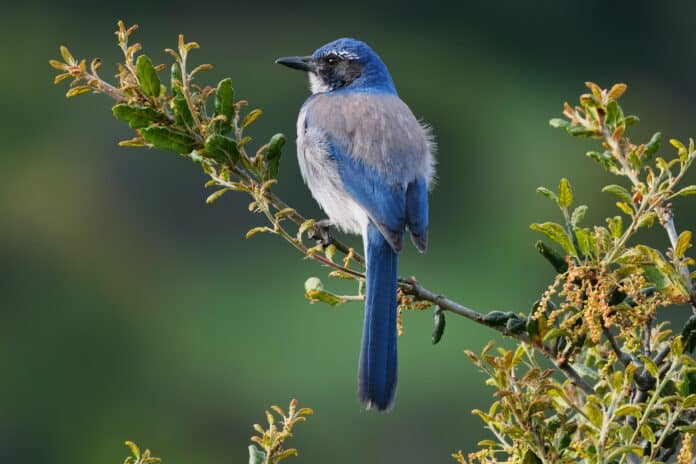The Florida scrub-jay, distinguished by its round head and blue-gray plumage, is a unique bird species that lives exclusively in Florida. This bird can be found in pockets of low-lying scrub oak within sandy soils. It typically perches upright, with its long tail trailing, and confidently hops on the ground to bury acorns. This sociable bird establishes intricate family bonds as the young from previous years assist their parents with future nests until they can secure a territory for themselves. Regrettably, Florida’s extensive development and habitat fragmentation pose a grave threat to this already limited population, warranting its placement on the federal endangered species list. The U.S. Fish and Wildlife Service listed the Florida scrub-jay as a threatened species in 1987 and the Florida Fish and Wildlife Conservation in 1975.
Exploring these fascinating birds and their environment can enhance our understanding of how best to safeguard them.
These birds typically measure between 10 and 12 inches in length and display a cerulean blue hue on their backs, while their undersides are lighter. They also often have a gray band across their backs. The appearances of male and female scrub-jays are similar, while the dusky brown heads and necks of juveniles make them easy to identify.
The Florida scrub-jay is the only species of bird that is native to Florida. They are picky birds with very specific habitat requirements; they depend entirely on oak scrub communities. Scrub is characterized by three to four species of stunted, low-growing oaks and scattered sandy clearings. When oaks are between 3 and 10 feet tall, there are sandy openings, and there aren’t many other trees around, the ideal scrub-jay habitats appear.
Scrublands or scrub ecosystems can be found on age-old dunes and ridges that once lined the coasts and central regions of Florida, marking the boundaries of ancient sea retreat. This arid, sandy terrain, speckled with life, provides a thriving haven for the Florida scrub-jays
.
As far as conservation and maintaining the dwindling scrub environments in Florida, fire ecology is an essential element in preserving scrub communities. Controlled burns serve to keep tree heights in check and maintain the sandy clearings vital for scrub-jays. Historically, wildfires maintained the natural state of scrubby flatwoods. But, due to development and population growth, these habitats must now be maintained with prescribed burns every 5–15 scrub years.
Family values run deep among scrub-jays, as pairs form lifelong bonds and collaboratively rear their offspring in tight-knit family units, which is a fascinating aspect of scrub-jay family life. Florida scrub-jays are homebodies; they don’t migrate, rarely move more than a few miles from where they hatched and don’t like to move across areas that aren’t scrub oak. Each scrub-jay family maintains a permanent territory, which will expand as the family grows.
Family cooperation even comes into play regarding predators for the Florida scrub-jay. Individual members of the family will take turns watching for hawks while the rest of the family is out searching for food. If a dangerous hawk is seen, the watchguard gives an alarm call, and everyone dives for cover. A different call alerts the family to ground-level dangers such as snakes. It’s worth noting that the entire family will join in on mobbing a predator.
Scrub-jays eat a variety of animals and plants. Insects comprise a major food source during spring and summer. Scrub-jays may also prey on frogs, toads, lizards, snakes, birds’ eggs, and even mice. In addition, each scrub-jay will harvest and bury 6,000–8,000 acorns from August to November for use throughout the year. We should not feed scrub-jays, even though they will readily accept handouts.
The Florida scrub-jay stands as a unique and cherished symbol of Florida’s natural heritage. Its captivating behaviors, family-oriented society, and vital role in fragile scrub ecosystems make it a compelling subject of study and conservation. However, the future of these charismatic birds is at a critical crossroads, as habitat fragmentation and development pose grave threats to their already limited populations.
The story of the Florida scrub-jay is one of resilience, adaptability and the intricate web of connections that bind all living beings to their environment. It reminds us that our actions today can shape the destiny of these avian treasures, and the choice is ours to make.
How can you help?
Provide habitat for scrub-jays. Plant, protect and cultivate patches of sand live oak, myrtle oak and Chapman’s oak scrubs on your property. The UF/IFAS Hernando County Extension is a great resource for help in recommending appropriate scrub plants to fit your landscape.
Restrict the use of pesticides. Florida scrub-jays feed on insects that are usually considered pests around golf courses and homes. Pesticides may limit or contaminate the food used by the jays. Reduce the use of pesticides as much as possible.
Support the establishment of regional and local scrub-jay preserves. Safeguarding scrub-jay populations in well-maintained, ideal habitats represents the most effective strategy for preserving these species.
For more information on federal regulations protecting the Florida scrub-jay, contact the U.S. Fish and Wildlife Service at 772.562.3909.


